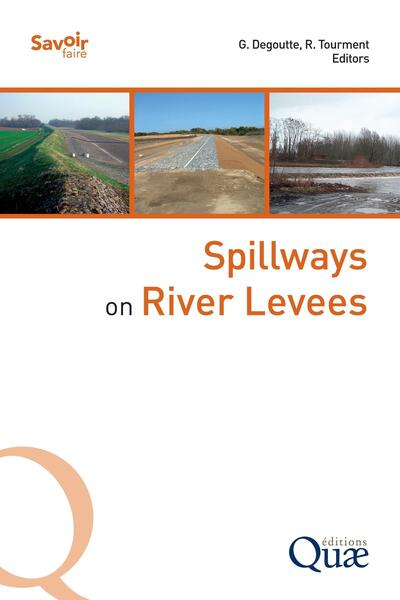- EAN13
- 9782759232840
- Éditeur
- Quae
- Date de publication
- 13 octobre 2021
- Collection
- Savoir-faire
- Nombre de pages
- 176
- Dimensions
- 24,1 x 16 x 1 cm
- Poids
- 1001 g
- Langue
- fre
Spillways On River Levees
Rémy Tourment, Gérard Degoutte
Quae
Prix public : 49,00 €
<p><font face="Times New Roman" size="3"></font></p><p style="margin: 0cm 0cm 0pt; line-height: normal"><span style="background: white; color: black; font-size: 9pt"><font face="Calibri">Levees are built on many rivers and mountain torrents to protect populations against floods. During medium floods, a well-constructed levee offers sufficient protection without requiring additional hydraulic structures. But this same levee represents a source of danger during high floods, since there is a risk of overtopping. Water that spills over a levee may create a breach that could potentially provoke flash flooding in the area it was supposed to protect, endangering human lives and infrastructure.</font></span><span style="color: black; font-size: 9pt">
<font face="Calibri"><span style="background: white">It is therefore advisable to equip levee systems with spillways, which are common appurtenant structures on dams. Yet spillways on levees play a far more complex role than those on dams, from securing protected areas to flood control. These structures can function as safety spillways or</span>
<span style="background: white">diversion spillways, or both (especially the older ones).</span>
<span style="background: white">This technical handbook, first published in French in 2012, covers different types of spillways on river levees, including their function, hydraulics, river morphology, civil engineering, and flood management. Written by a working group led by INRAE, it is intended for levee managers, control</span>
<span style="background: white">authorities, engineering firms, and hydraulics or civil engineering students. Given increasing international interest in levees and flood protection systems, particularly following ICOLD’s creation of a Technical Committee on Levees, INRAE decided to update and translate this guide into English</span>
<span style="background: white">to share the French experience.</span></font></span></p><p><font face="Times New Roman" size="3"></font></p>


















